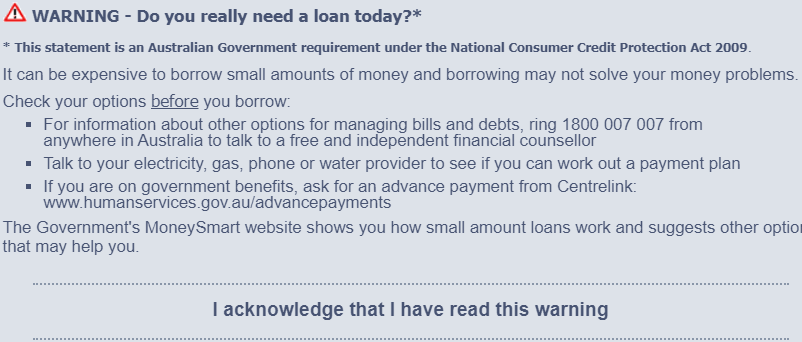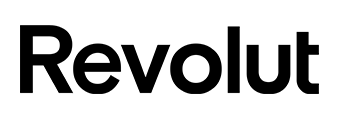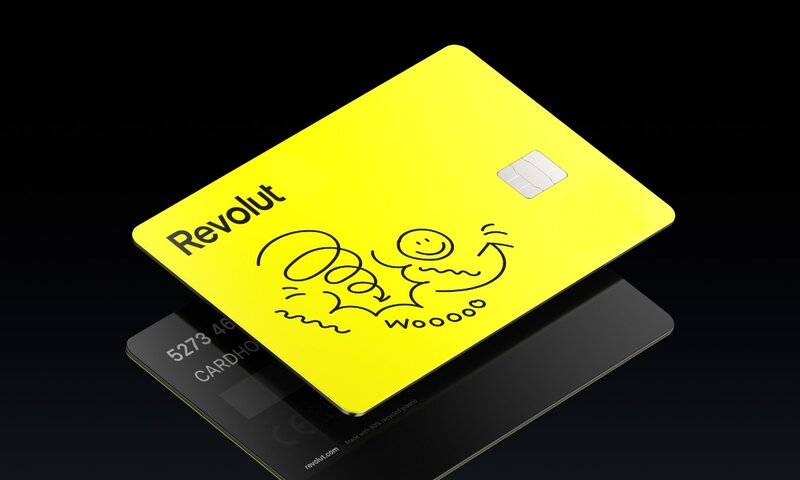Personal loans can be useful for a broad range of things: Whether it’s paying for a holiday, a wedding, financing home renovations, paying off debts or borrowing for education or medical purposes, a good personal loan can give you access to cash straight away without having to save up for it (with fees and interest charges of course).
In the market for a personal loan? The table below features personal loans with some of the lowest interest rates on the market.
What are the different types of personal loans?
Generally speaking, you can get the following personal loans from most mainstream banks and lenders, as well as those smaller businesses that exist specifically to offer personal loans to Australians:
-
Secured loans
-
Unsecured loans
-
Overdrafts
-
Line of credit loans
-
Debt consolidation loans
-
Student loans & guarantor loans
Secured personal loans
Usually the more common type of personal loan, a secured personal loan is a type of personal loan secured against something you own, and can even be the thing you’re borrowing for. By this, we mean you put up something you own (like a car) as collateral in case you can’t meet the repayments. Should you default on the secured loan, the lender can seize this asset and sell it.
Secured loans generally allow you to offer up the following as security, in exchange for lower rates and fees:
-
Vehicles (cars, motorbikes, boats etc.)
-
Cash, such as a money in a term deposit
-
High-value assets like jewellery or paintings (less-common, judged on a case-by-case basis).
You can get more favourable rates and fees with secured loans because by having an asset as security on the loan, the lender may deem you to be less of a risk…
Unsecured personal loans
The opposite can be said for unsecured personal loans, which, as the name suggests, do not require you to put anything up as collateral. You can still take out the loan, but unsecured loans tend to charge higher interest rates and higher fees compared to unsecured loans. Plus, the lender can still take legal action against you if you default on the loan, so failing to meet the repayments isn’t consequence-free.
On the plus side, unsecured loans are often easier to get and still have lower interest rates than most credit cards, which we’ll go into later.
See also: How to choose between secured and unsecured personal loans
Overdrafts
Overdrafts are a kind of line of credit you attach to your regular transaction account, to cover for unexpected expenses. Essentially, it acts as a temporary increase to your bank account balance, and although overdrafts do charge interest, they often only actually charge interest on what you use in any given month.
Overdrafts usually only start working when you go below $0 in your account and will go up to a specified limit. Overdrafts can also charge establishment and ongoing fees, which you should check before you start using one.
Even though overdrafts can technically be used for non-emergency purchases, you should probably consider other options first, and if you find your bank balance regularly going negative, you should probably review your spending habits and do up a new budget.
Line of credit loans
Perhaps the most similar to credit cards among all these products, a line of credit is essentially a pre-agreed borrowing limit that you can use at any time, and you’re only charged interest on the funds you actually use. For example, if you have a line of credit of $10,000, but only use $5,000, then you’d be charged interest on $5,000.
These usually have higher interest rates than other types of personal loans but can be more convenient, as you have access to your funds whenever you need them.
Debt consolidation loans
A debt consolidation loan is a type of personal loan (or a home loan) that allows you to combine your other debts, such as credit card and car loan debts, into a single loan, so you can pay your combined debts off in a single, hopefully lower-rate place.
But this method can have its flaws. For example, you could end up stretching your short-term debts into a longer-term loan, which can cancel out the benefits of a lower interest rate. This is especially true if you consolidate your debts into a home loan, which generally has a much lower (often sub-3% p.a) interest rate but 20-30 year loan terms. But you can avoid this by bundling your debts into a shorter personal loan.
Student & guarantor loans
These are a kind of loan available only to students in Australia to help them pay for things that help them study, which could be things like textbooks or a new computer, or something like a car to help them get to and from university or TAFE.
These loans are available from many lenders and banks to Australian residents over 18, helping students avoid paying for such things upfront and can be deferred for up to five years if necessary. Some banks don’t charge application fees for student personal loans, but interest does start accruing from the date you take out the loan. For a student on a low budget, this could quickly become unaffordable.
If you think you might have trouble meeting the repayments, most banks and lenders that offer these loans allow you to apply with a guarantor, like your parents or a guardian. Having the security of a guarantor on hand can also give you access to lower than average interest rates as well as some lower fees in some cases.
Fixed vs variable personal loans
Personal loans can also come with either fixed or variable interest rates: A fixed loan means your interest rate is locked in for the duration of the personal loan, while a variable personal loan means your interest rate can change on the whims of your lender or movements in the broader market. At the time of writing (January 2021):
-
Fixed-rate loans tend to have slightly higher rates and fees - for example, they tend to charge exit fees for breaking the fixed term - but can offer you secure repayments, whereas
-
Variable-rate loans often have lower rates and fees, but this could change if the interest rate on your loan is increased by the lender (and your repayments would increase with it)
Either a fixed or variable rate loan may work better depending on what you’re using the money for. Fixed loans might be better for bigger purchases as you can have more structured repayments, but a variable personal loan could be the better solution for a smaller loan amount, like if you’d borrowed for a holiday that you want to pay off quickly.
Personal loans vs car loans
Technically, personal loans and car loans are the same thing, with a car loan just being a personal loan used to finance the purchase of a car. Most car loans are secured, as cars are a high-value asset, meaning the majority of loan options for cars out there will require you to offer the car as collateral on the loan.
A smaller number of car loans are unsecured, meaning you don’t have to use anything as security. These unsecured car loans tend to charge much higher interest rates compared to secured ones on average. A quick scan of the market shows a typical low secured car loan interest rate is around the 5% p.a mark, while an unsecured loan might be a bit higher, around 6.50% p.a, on the lower end of the market.
See: Secured vs unsecured car loans
Personal loans vs credit cards
While personal loans are fixed amounts borrowed at an interest rate, credit cards give you a revolving line of credit, up to a specified limit and usually at a higher interest rate.
See: Personal loans vs credit cards
Credit cards can be more useful for paying bills and everyday spending (just don’t overspend with them) as they can often come with handy rewards programs and benefits, and they also allow you to clump multiple different payments together into one monthly bill. Personal loans, on the other hand, might be better suited to making larger one-off purchases, as you can find out exactly what you’ll need to repay beforehand and reduce your risk of going over-budget.
For more information on credit cards, including how credit card interest works and the different types of credit cards, visit our credit card hub page.
Personal loans vs P2P lending
Peer to peer lender (P2P) loans are a viable alternative to personal loans. Unlike personal loans, which involve going to a bank or lender for a loan, P2P lending allows you to access a tier-based pricing system for loans from a marketplace. One person or business borrows money for an amount of interest, and another person supplies the money, getting some interest in return.
P2P loans sometimes offer lower rates and fees and can give you access to the funds on the same day, but may have some stricter criteria and aren’t as common, with only a handful of lenders operating in Australia at the moment. You can see a list of these lenders in our article ‘Who offers peer to peer lending in Australia'.
Personal loans vs payday loans
Although they share some similar characteristics, payday loans and personal loans are very different. Often referred to as ‘debt vultures’ and ‘predatory lenders' by regulatory bodies, payday loans allow you to borrow small amounts of money (usually up to $2,000 but sometimes up to $5,000) that must be repaid within 16 days to 12 months. While that might not sound too bad, payday lenders compensate for not being able to charge interest by charging higher fees instead.
Legally, according to ASIC, they can ‘only’ charge the following:
-
A one-off establishment fee of up to 20% of the amount loaned
-
A monthly account keeping fee of up to 4% of the amount loaned
-
A government fee or charge
-
Default fees or charges - up to 200% of the total loan amount
-
Enforcement expenses (if the lender has to take you to court for failing to repay the loan). There is no limit on these expenses
Personal loans charge lower interest rates and fees compared to payday loans and also allow for longer time frames for repayment, usually up to several years.
While personal loans can be useful in many situations, you need to be careful with payday loans and should generally avoid them.

Payday lenders are forced under Australian consumer law to display this warning message to potential applicants.
Savings.com.au’s two cents
There are plenty of different personal loan choices out there, and each different type has dozens if not hundreds of choices available from a number of banks, lenders, and peer-to-peer lenders. It’s important that you choose the right one.
If you're borrowing for something large, like a boat or a home renovation, then you might be better off going for a secured, fixed personal loan, as these can not only give you regular, unchanging repayments, but can also grant you a lower interest rate and more favourable lending terms. For smaller loans, like borrowing for something like a computer for university or to help fund part of a holiday, a variable loan could be the better choice, and depending on how confident you are in your ability to repay the loan, an unsecured loan could lead to faster approval.
When comparing personal loans, always consider multiple different products based on:
-
The fees, or lack thereof
-
How low the interest rate is
-
How much you need to borrow: there’s no need to borrow $20,000 if you only need $10,000
-
What you’re borrowing for
-
The flexibility of the loan, like whether you can make extra or more frequent repayments
-
And of course, whether other products (like, say, a credit card) could be more suitable
Photo by Victoriano Izquierdo on Unsplash






 Harrison Astbury
Harrison Astbury
 Harry O'Sullivan
Harry O'Sullivan

 Dominic Beattie
Dominic Beattie
 Emma Duffy
Emma Duffy

